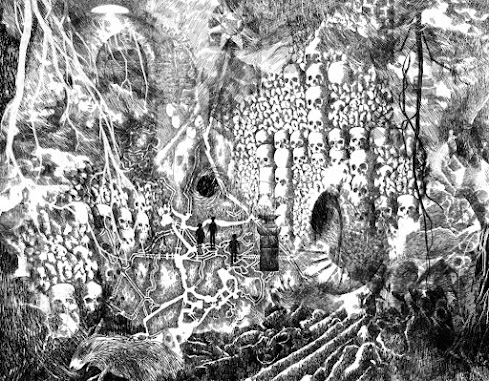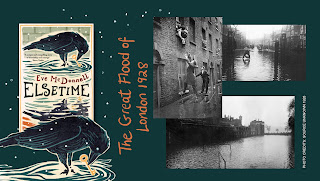Hands up: who enjoys history class in school? Truth be told, I loved history lessons, but I found it all a little bit hard. I was focusing so hard on all those dates and names that I missed something special – something hidden between the pages and beyond the facts! With a bit of digging, I discovered wild adventures that were rarely told. I found little triumphs and forgotten struggles, coincidences, intriguing inventions and strange fashions. I also learned about the personal lives of the stars of our history books (how did 18-year-old Victoria spend that one lonesome hour she’d requested when she was first told she was Queen?).
Over time, I found myself seeking out the stories behind the stories, and I found what I was looking for in several places: in a fiction book with a hint of history; in a fact-filled documentary on TV; in a brilliantly re-imagined moment of history at the movies; in dug-up treasures; in paintings. I soon realised that any mash-up of history and make-believe grabbed and held my fullest attention. The perfect recipe!
Of course there is! The history bit goes as follows: the story is set in Paris 1888, one year before they hosted a spectacular World Fair known as the Exposition Universelle. Great minds of the world marvelled at the fair’s mind-blowing exhibits, and visitors feasted their eyes on intriguing inventions. Even before arrival at the Exposition, visitors were greeted by something extraordinary – the newly built grand entrance to the exhibits: the Eiffel Tower.
And that is where I added make-believe to history: when I found a series of photographs showing the growing Eiffel Tower, I tried to imagine how everyone felt on seeing such a giant rise slowly before their eyes. How would the people of Paris have reacted if they went to sleep one day in 1888 when the tower was only small, and woke up forgetting the whole of the last year? To them, the tower would have grown into a monster overnight, from the first image in the row of towers shown above, to the fifth!The Eiffel Tower was not the only historical Parisian marvel I included in the book. Paris is the location of possibly the best place in all the world for a game of hide and seek: its underground maze of tunnels, some barely big enough to wriggle through. These underground quarries were the birthplace of the stone used to build many of the great buildings of Paris. Though the existence of the underground city comes as some surprise to The Chestnut Roaster’s main character, Piaf, the estimated nearly 200 miles of tunnels made their presence known throughout Parisian history.
In the 1770s, a deadly sinkhole known as the ‘Mouth of Hell’ swallowed houses at Rue d’Enfer. A few years on, the hidden chambers were used as burial sites during the French Revolution, and later, during World War II, the French Resistance fighters used the dark and deep tunnels as hideouts while other chambers were converted into bunkers by German soldiers. Secret parties and concerts were held underground, explorers explored, and artists left their mark with wild and wonderful murals.To add a dash of fiction, I added several wondrous underground spots for Piaf and her brother to explore: a Museum of Objects, Tagine Pot Hollow, and the Apothecary, to name a few.
You can visit one small section known as the Catacombs today, and it has some very strange inhabitants indeed – the bones of six million people! At the end of the 18th century, Paris’s cemeteries were overflowing. The streets held the stench of corpses, bones collapsed into neighbouring buildings. By cover of night, the corpses were carried by horse and black cloth-covered wagons to the Catacombs where workers fashioned impressive displays out of the bones themselves. As odd as that may seem, you can see for yourself that the bones are not make-believe! They had to star in Piaf’s story!Illustration from The Chestnut Roaster, copyright Ewa Beniak-Haremska
But sometimes the mash-up of history and make-believe is not so clear: Piaf and her brother were never alone on their adventures, for the ghost of poor Philibert Aspairt, a man said to have disappeared underground, is said to roam the darkest routes (and also the pages of The Chestnut Roaster!) If that is history or make-believe, we have yet to tell!
So, as you can see, history provided so much inspiration for The Chestnut Roaster – it is indeed one big mash-up of history and make-believe! I wonder, if you picked a page from your history book today, what stories could you imagine when you read between the lines?
Perhaps you can create your own?
You can watch Eve's video on how she came to write The Chestnut Roaster here.
Eve McDonnell is a children’s author and artist who lives in Co Wexford with her husband, twins, a dog and three cats. Having recognised the similarities between a blank canvas and a blank page, her writing career kicked off following a visit to a fortune-teller who told her to Write! Write! Write! Eve provides creative writing and crafting workshops to libraries, schools, writing clubs and festivals.
Find out more about Eve and her books on www.evemcdonnell.com, or say hello via Twitter @Eve_Mc_Donnell or Instagram @Eve_Mc_Donnell.
Buying link: uk.bookshop.org










